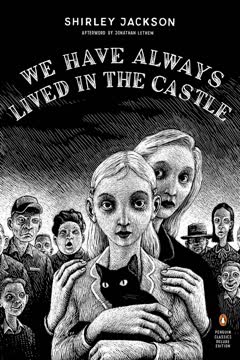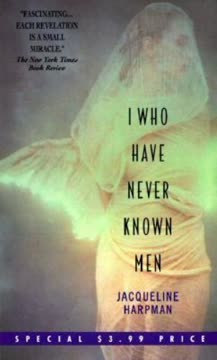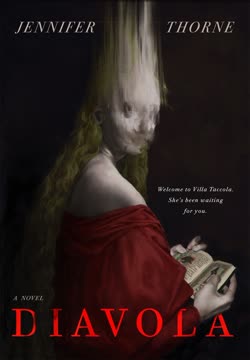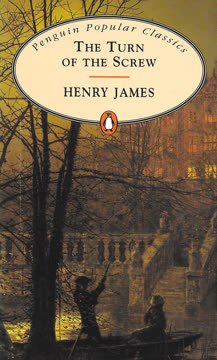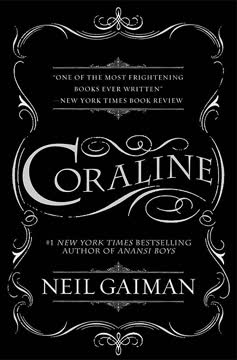Plot Summary
Blackwood Sisters' Fortress
Mary Katherine "Merricat" Blackwood, her older sister Constance, and their ailing Uncle Julian live in a grand, decaying house on the edge of a hostile New England village. The Blackwood estate is both a sanctuary and a prison, fortified by fences, locked gates, and rituals. Merricat, the narrator, is fiercely protective of Constance, who never leaves the property, and Uncle Julian, who obsessively documents the family's tragic history. The sisters' days are governed by routines, superstitions, and a deep sense of otherness. The villagers' animosity is palpable, rooted in the mysterious deaths of most of the Blackwood family years earlier. The sisters' bond is intense, almost otherworldly, and their home is a world apart, suspended in time and memory, haunted by the past and fortified against the outside.
Village Hostility and Isolation
Merricat's rare trips into the village for groceries and library books are fraught with anxiety and hostility. The townspeople taunt her, children sing cruel rhymes about poison, and adults gossip about the Blackwoods' wealth and infamy. The sisters are ostracized, objects of both fear and fascination. Constance, gentle and agoraphobic, relies on Merricat to face the outside world. Their isolation is both imposed and chosen, a response to the villagers' malice and the trauma of the family's poisoning. The Blackwoods' routines—gardening, cooking, and caring for Uncle Julian—become rituals of survival. Merricat's magical thinking and protective "spells" (burying objects, reciting words) are her way of keeping evil at bay, reinforcing the boundaries between their fragile sanctuary and the threatening world beyond.
Poisoned Past Unveiled
The Blackwood family's dark history is gradually revealed: six years earlier, arsenic-laced sugar killed most of the family during dinner. Constance was accused but acquitted of murder, while Merricat, then a child, was sent away. Uncle Julian survived but was left physically and mentally impaired. The community's suspicion lingers, and the sisters' isolation deepens. Uncle Julian obsessively recounts the events of the fatal night, his memories fragmented and unreliable. The sisters never speak of the tragedy, but it shapes every aspect of their lives. The house is a mausoleum, filled with relics of the dead and the weight of unspoken guilt. The villagers' hatred is fueled by rumors, class resentment, and the enduring mystery of the Blackwood poisonings.
Rituals and Safeguards
Merricat's world is governed by rituals and superstitions. She buries objects around the property, nails books to trees, and recites protective words to ward off change and danger. These acts are both childish games and desperate attempts to control a hostile reality. Constance's routines—cooking, cleaning, preserving food—are equally ritualistic, preserving a semblance of normalcy and order. Uncle Julian's endless note-taking is his way of making sense of the past. The sisters' insularity is both a defense and a form of denial, a refusal to confront the full horror of their family's destruction. Their home becomes a fortress of memory and habit, where time stands still and the outside world is kept at bay by invisible barriers.
Cousin Charles Arrives
The fragile equilibrium is shattered by the arrival of Charles Blackwood, a distant cousin. Charles is charming but opportunistic, drawn by rumors of hidden wealth. He ingratiates himself with Constance, positioning himself as a protector and potential savior. Merricat immediately senses him as a threat, an invader who disrupts their rituals and seeks to control the household. Charles's presence awakens tensions—he questions the sisters' routines, criticizes Uncle Julian, and tries to assert authority. Constance, craving normalcy and male approval, is momentarily swayed by Charles's attention. Merricat's magical defenses intensify, and her hostility toward Charles grows. The house, once a sanctuary, becomes a battleground for control and belonging.
Intruder in the Sanctuary
Charles's influence deepens, and he begins to dominate the household. He moves into the late father's room, appropriates possessions, and fixates on the family safe. His presence exacerbates Uncle Julian's confusion and Constance's anxiety. Merricat's resistance becomes more overt—she sabotages Charles's belongings, disrupts his routines, and tries to drive him out through acts of sympathetic magic and mischief. The sisters' bond is tested as Constance is torn between loyalty to Merricat and the allure of Charles's promise of normalcy. The house, once orderly, is thrown into chaos. The struggle between Merricat and Charles is a battle for the soul of the Blackwood home, with Constance caught in the middle.
Power Struggles and Tensions
Tensions escalate as Charles's true motives become clear—he is obsessed with the family's money and resents Merricat's power over Constance. Merricat's acts of rebellion grow bolder, culminating in a destructive outburst that leaves Charles's room in disarray. The sisters' routines are disrupted, and the house feels increasingly unsafe. Uncle Julian's health declines, and Constance is overwhelmed by guilt and indecision. The villagers' curiosity intensifies, and the sense of impending disaster grows. The fragile boundaries that have protected the sisters begin to crumble, and the threat of exposure and violence looms ever closer. The Blackwood home teeters on the brink of collapse, both physically and emotionally.
Fire and Ruin
A catastrophic fire breaks out, sparked by Charles's carelessness. The flames consume the upper floors, and the house is invaded by firemen and villagers. The sisters are forced to flee, hiding in the woods as their sanctuary is violated. The villagers, emboldened by the chaos, ransack the house, smashing windows, looting, and mocking the sisters with cruel songs. The Blackwoods' carefully maintained world is destroyed in a frenzy of violence and hatred. Uncle Julian dies in the chaos, and the sisters are left homeless and hunted. The fire is both literal and symbolic—a purging of the past, a destruction of illusions, and a brutal exposure of the sisters' vulnerability.
Mob Violence and Loss
The aftermath of the fire is a scene of devastation. The villagers, having vented their rage, are left with guilt and unease. The sisters, traumatized and bereft, hide in the woods, mourning Uncle Julian and the loss of their home. The house, once a fortress, is now a ruin, open to the sky and stripped of its treasures. The sisters' isolation is complete—they are now exiles in their own land, feared and pitied by the community. The violence of the mob reveals the depth of the villagers' resentment and the precariousness of the sisters' existence. The Blackwoods' world has been irrevocably altered, and survival requires a new kind of resilience.
Exile and Reinvention
Emerging from hiding, Merricat and Constance return to the wrecked house. They salvage what they can, barricade the remaining rooms, and create a new, smaller world within the ruins. Their routines are reinvented—meals are simpler, possessions are few, and the outside world is kept at an even greater distance. The sisters adapt to their new reality with ingenuity and determination. Constance's grief is tempered by her love for Merricat, and Merricat's magical thinking evolves into a fierce protectiveness. The house becomes a true fortress, impenetrable and self-sufficient. The sisters' bond is stronger than ever, forged in adversity and loss.
The World Outside Changes
The villagers, shamed by their actions, begin to leave offerings of food and gifts at the Blackwoods' door. These gestures are both penance and an acknowledgment of the sisters' enduring presence. The sisters become legends, the subject of new rumors and stories. Children dare each other to approach the house, and adults speak of the Blackwoods with a mixture of fear, fascination, and regret. The sisters, once pariahs, are now mythic figures—witches, ghosts, or saints, depending on the teller. The world outside has changed, but the sisters remain apart, their isolation now tinged with a strange kind of power.
Gifts from the Villagers
Baskets of food, pies, and preserves appear regularly on the Blackwoods' doorstep. The villagers' guilt manifests as anonymous generosity, a silent truce between the sisters and the community. Constance and Merricat accept the gifts but never open the door or acknowledge the givers. The house, though ruined, is sustained by these offerings. The sisters' survival becomes a communal secret, a way for the villagers to atone for their violence without confronting it directly. The Blackwoods' existence is both a reproach and a reassurance—a reminder of the consequences of cruelty and the persistence of the past.
Ghosts, Memories, and Survival
The sisters' days settle into a new rhythm. They wear makeshift clothes, eat simple meals, and tend a small garden. The house is a shell, but within it, they create a space of comfort and safety. Memories of the dead linger—Uncle Julian's papers, family relics, and the ever-present sense of absence. Merricat's magical thinking persists, but now it is focused on protection and healing. The sisters' relationship deepens, marked by tenderness, forgiveness, and a shared understanding of their unique fate. The ghosts of the past are both a burden and a source of strength, shaping the sisters' identity and resilience.
Fortress Restored, Sisters Endure
In the end, the Blackwood sisters endure. Their home, though scarred and diminished, is once again a fortress—this time against pity as much as hatred. The villagers' offerings continue, and the sisters become figures of legend, both feared and revered. Merricat and Constance find contentment in their solitude, their love for each other undiminished by loss. The world outside may change, but within their walls, the sisters create a life on their own terms. The story closes with a sense of uneasy peace—the Blackwoods have always lived in the castle, and always will, their survival a quiet act of defiance and grace.
Characters
Mary Katherine "Merricat" Blackwood
Merricat is the eighteen-year-old narrator, though her voice and behavior are childlike and feral. She is deeply attached to her sister Constance and obsessed with rituals, magical thinking, and protective "spells." Traumatized by the family tragedy, Merricat is both innocent and dangerous—her imagination is vivid, her sense of reality distorted, and her capacity for violence hidden beneath her devotion. She is the true architect of the family's isolation, both as the poisoner (a fact revealed obliquely) and as the guardian of the Blackwood fortress. Merricat's psychology is complex: she is at once a victim and a perpetrator, a child and a witch, her love for Constance both pure and possessive. Her development is marked by increasing agency and a willingness to do whatever it takes to preserve her world.
Constance Blackwood
Constance is Merricat's older sister, the caretaker of the household and the object of Merricat's devotion. Acquitted of the family murders, she is gentle, patient, and endlessly forgiving. Her agoraphobia keeps her confined to the house and garden, and her routines—cooking, cleaning, preserving—are both a comfort and a prison. Constance's relationship with Merricat is maternal, protective, and at times complicit; she knows more than she admits and chooses love over judgment. Her development is subtle: she moves from passive victimhood to quiet strength, ultimately choosing Merricat and their shared isolation over any hope of reintegration with the outside world.
Uncle Julian Blackwood
Uncle Julian is the sisters' elderly, infirm uncle, the only other survivor of the poisoning. His mind is fractured, and he is obsessed with documenting the events of the fatal night, endlessly revisiting details and speculations. He serves as both a source of exposition and a symbol of the family's inability to move on. Uncle Julian's relationship with the sisters is dependent and affectionate, though he is often lost in his own memories. His decline and eventual death mark the end of the old Blackwood order and the final severing of ties to the past.
Charles Blackwood
Charles is a distant cousin who arrives seeking the Blackwoods' rumored fortune. Outwardly charming, he is manipulative, self-serving, and increasingly aggressive. He represents the intrusion of the outside world, the threat of change, and the dangers of male authority. Charles's attempts to control the household and win Constance's favor are met with resistance from Merricat, leading to escalating conflict. His presence exposes the sisters' vulnerabilities and precipitates the crisis that destroys their home. Charles is ultimately revealed as a shallow, greedy outsider, incapable of understanding the sisters' bond or the true nature of their world.
The Villagers
The villagers are a faceless, shifting mass—sometimes individuals, sometimes a mob. Their attitudes range from open hostility and mockery to guilty pity and reluctant generosity. They represent the forces of conformity, suspicion, and class resentment. The villagers' cruelty is both a response to the Blackwoods' difference and a projection of their own fears and desires. Their eventual violence is a cathartic but shameful act, followed by attempts at atonement through gifts and offerings. The villagers' relationship to the sisters is ambivalent, oscillating between persecution and reverence.
Helen Clarke
Helen Clarke is a family acquaintance who visits the Blackwoods out of a sense of duty and curiosity. She urges Constance to rejoin society and represents the pressure to conform and "move on." Her attempts at intervention are clumsy and ultimately futile, highlighting the gulf between the sisters and the outside world. Helen's presence is a reminder of what has been lost and what can never be regained.
Jonas (the Cat)
Jonas is Merricat's beloved cat, her constant companion and confidant. He is both a comfort and a symbol of the sisters' feral, untamed existence. Jonas's presence reinforces the magical, otherworldly atmosphere of the Blackwood home and serves as a silent witness to the family's secrets.
Mrs. Wright
Mrs. Wright is a nervous visitor brought by Helen Clarke. Her fascination with the Blackwoods' tragedy and her discomfort in their home reflect the villagers' morbid curiosity and underlying fear. She serves as a foil to Constance's composure and Merricat's hostility, highlighting the sisters' difference.
The Blackwood Parents and Brother (Deceased)
The murdered parents and brother are ever-present in memory and ritual. Their absence shapes the sisters' lives, and their possessions fill the house with reminders of loss. The family tragedy is the axis around which the story turns, and the dead exert a powerful influence on the living.
The Mob
The mob that destroys the Blackwood home is the culmination of years of resentment and fear. Their violence is both personal and collective, an eruption of suppressed emotions. The mob's actions strip away the last vestiges of the sisters' security, forcing them to adapt and survive in a new, harsher world.
Plot Devices
Unreliable Narration and Magical Thinking
The novel's power lies in Merricat's unreliable narration—her voice is both innocent and sinister, her perceptions shaped by trauma, magical thinking, and denial. The reader is drawn into her rituals and superstitions, experiencing the world as she does: full of omens, threats, and secret meanings. This device blurs the line between reality and fantasy, creating an atmosphere of unease and ambiguity. The truth of the family tragedy is revealed obliquely, through hints and omissions, forcing the reader to piece together the story from fragments. The magical thinking is both a coping mechanism and a form of control, reflecting the psychological damage wrought by isolation and violence.
Gothic Setting and Atmosphere
The Blackwood house is a classic Gothic setting—grand, decaying, filled with relics and secrets. Its isolation and the sisters' routines create a sense of timelessness and claustrophobia. The house is both a sanctuary and a prison, a character in its own right. The setting reinforces themes of decay, memory, and the persistence of the past. The contrast between the house and the hostile village heightens the sense of siege and otherness.
Social Paranoia and Mob Mentality
The villagers' hostility is rooted in class resentment, suspicion of difference, and the need for a scapegoat. The Blackwoods' wealth, eccentricity, and the unsolved murders make them targets for gossip and violence. The mob scene is a masterful depiction of collective hysteria, where individual responsibility is subsumed by group emotion. The aftermath—guilt, offerings, and uneasy peace—reflects the complexities of social dynamics and the difficulty of true reconciliation.
Ritual and Repetition
The sisters' lives are governed by ritual and repetition—meals, cleaning, gardening, magical acts. These routines are both a defense against chaos and a refusal to move forward. The repetition creates a sense of stasis, as if time has stopped within the Blackwood home. This device underscores the psychological impact of trauma and the difficulty of healing.
Foreshadowing and Symbolism
Jackson uses foreshadowing and symbolism to build tension and deepen the narrative. Objects—sugar, buried treasures, locked doors—carry layered meanings. The fire is foreshadowed by Merricat's destructive impulses and the escalating conflict with Charles. The villagers' songs and taunts hint at the violence to come. The gradual revelation of the truth about the poisonings is handled with subtlety, allowing the reader to experience the story's emotional arc alongside the characters.
Analysis
Shirley Jackson's We Have Always Lived in the Castle is a masterwork of psychological horror, social critique, and gothic atmosphere. At its core, the novel explores the consequences of trauma, the power of ritual, and the dangers of othering. The Blackwood sisters' isolation is both a response to and a cause of the villagers' hostility, creating a feedback loop of fear, resentment, and violence. Jackson's use of unreliable narration immerses the reader in Merricat's damaged psyche, blurring the line between innocence and guilt, fantasy and reality. The novel interrogates the boundaries between self and society, home and exile, love and possession. The villagers' eventual violence is a chilling indictment of mob mentality and the human capacity for cruelty. Yet, the sisters' survival—rooted in their unbreakable bond and their ability to adapt—offers a darkly hopeful vision of resilience. The story's enduring power lies in its ambiguity, its refusal to offer easy answers or redemption. In a world that punishes difference and clings to conformity, the Blackwood sisters' defiant endurance is both a warning and a testament to the complexities of human connection.
Last updated:
Review Summary
We Have Always Lived in the Castle is a haunting gothic novel that captivates readers with its unsettling atmosphere and unreliable narrator. The story follows two sisters living in isolation after a family tragedy. Many reviewers praise Jackson's masterful prose, character development, and ability to create tension. The book's exploration of societal outsiders and small-town dynamics resonates with readers. While some find the plot predictable, most are drawn in by the eerie tone and psychological depth. The novel's ambiguous ending leaves a lasting impression, solidifying its status as a classic of American literature.
